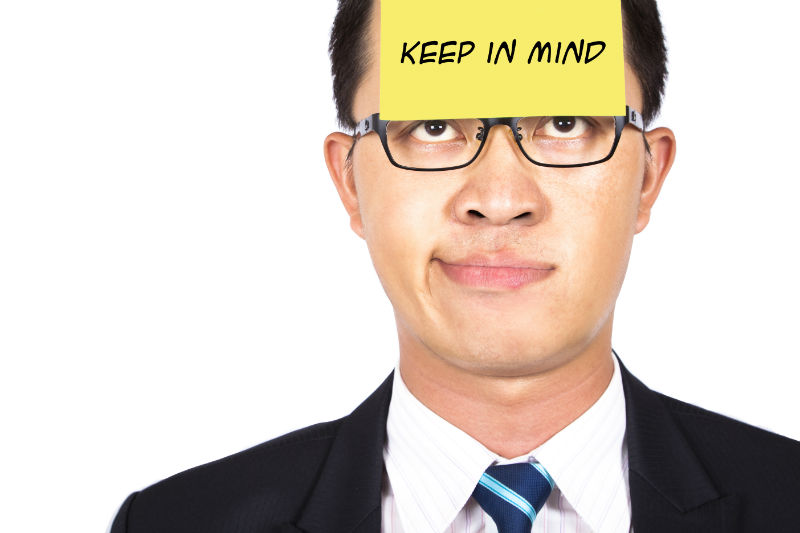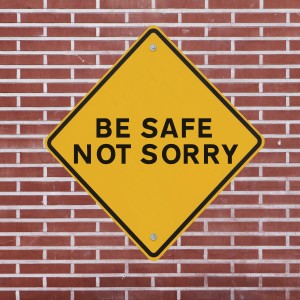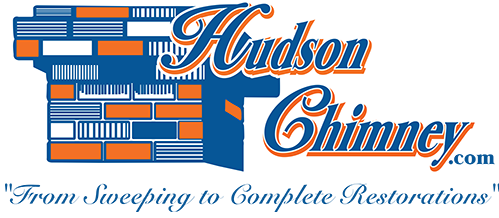by Mark Hudson | Apr 8, 2014 | chimney maintenance, fire safety
Let’s Talk Creosote Removal
Have you noticed any black particles and burnt-like marks on your chimney walls? You might think it’s just stained because of the smoke, however these should not be underestimated, because creosote buildup can become quite dangerous.

Don’t forget to have your chimney cleaned and inspected at least once a year to maximize output and safety.
What is that black substance coating your chimney walls? It’s called creosote, a chemical byproduct of open combustion from burning either hardwood or softwood. These two types of wood usually need to be seasoned and dried up to at least six months so that only minimal production of creosote is made. This means that creosote production is inevitable and the biggest dilemma once creosote has built up in your chimney is the probability of chimney fires occurring.
So because we can’t prevent it from forming, the next best thing is to make sure that it is regularly removed. When you talk about creosote buildup, there are three levels. Thankfully our CSIA-licensed chimney sweeps here at Hudson Chimney are ready to take full control and assess, clean and remove creosote.
Level I
The first stage is usually called soot. It’s still flaky and dusty like ash only that it’s found in the chimney walls. It is the slightest form with maybe a layer or two and can easily be removed by a chimney brush. We usually just brush it off. The process takes very little time but before the removal process is done, we first inspect and do a little cleaning.
Level II
The second stage of creosote already has tar-like features. It is now harder to remove and we usually need to use stiffers or special kinds of brushes. By now, the layers are getting thicker. Removing it will take more time than usual. During this level, creosote is building up to be more flammable and more dangerous. Nonetheless, it can still be removed.
Level III
The last and final stage is the most difficult to remove and the most dangerous. It is no longer called creosote but it is now called glaze. It is thick, totally black and is like candle wax; a hard, glossy, dark mass. By now, the chance of chimney fires occurring is greater.
To prevent this, constant cleaning and removing of creosote is the ultimate key. Once creosote starts to build up, contact Hudson Chimney so that we can monitor and lessen the problem. Give us a call and we’ll tell you more!
by Mark Hudson | Mar 25, 2014 | chimney maintenance
Think of your chimney flue sort of like a drinking straw — its job is to pull what’s inside of it up, and out. And just like a straw, imperfections can quickly stop it from doing that job. Ever struggled with a straw that had a crack in it? A chimney with a damaged flue liner behaves in a similar way — the chimney’s draft can pull and pull, but cracks and gaps fight against the upward draw.

Your chimney should be free of any kind of blockage — otherwise you’ll have big problems to deal with. See to it that you have your chimney inspected and swept as scheduled.
If you’ve ever had a way-too-thick milkshake, you know how your flue responds to a blockage. Once again, try as it might, draft can’t pull the air and gases inside your chimney up, because something’s closing off the passage and hampering upward movement.
Blockages are a serious issue — depending on what it is that’s blocking your flue, you could end up with anything from a smoky living room to a fire hazard or toxic carbon monoxide leaking into your home.
During your annual chimney inspection, Hudson Chimney technicians always check your flue for blockages or potential blockages. But between inspections, if you’re noticing draft issues — from smoke to fireplace stains — give us a call. We can check to see if your flue is blocked, and make the necessary repairs to have your chimney properly venting again.
Some Of The Most Common Chimney Blockages:
Every situation is different, but there are certain types of blockages that we routinely come across at Hudson Chimney:
Nesting Animals Brought Flammable Debris Into Your Flue
Why It Happened: In most cases, animals move into your chimney a) because it’s an attractive place to nest and b) because nothing was stopping them from doing so. If your chimney isn’t closed off to birds and other visitors, they take that as a vacancy sign, and move right in. Their nests and other debris can quickly block your flue and affect your draft, and since nesting materials are generally flammable, they can also create a fire hazard.
What Hudson Chimney Can Do: install a quality chimney cap. Chimney caps help keep moisture out of your chimney, but they also lock animals, and their nests, out. If you want or need something special, we also install custom chimney caps!
Creosote Buildup Is Closing Off Your Flue
Why It Happened: Creosote buildup is a natural part of using a wood-burning heating appliance. Heated air, gases and particles produced through the combustion of wood rise up in the flue, then condense into a liquid as they reach the cooler flue walls. That condensation layers over time and with use, and you have creosote buildup. The longer you go without a professional chimney sweeping, the more creosote buildup you have — and it can get considerable enough to block your flue and affect your draft.
What Hudson Chimney Can Do: properly sweep your chimney, and help you develop a regular chimney sweeping schedule that keeps your flue clear and venting the way it should.
Damaged Flue Liner Pieces Have Fallen Into Your Flue
Why It Happened: Many older chimneys have flue liners made out of terra cotta clay tiles. Although those tiles can be pretty durable, it’s not uncommon for cracks to develop. If those cracks widen enough for pieces of tile to break off, they can fall into the flue and create a blockage. Cracked flue liner tiles are among the things Hudson Chimney technicians look for during a chimney inspection — and that’s an important part of what we do, because a damaged flue liner affects not only your draft, but your chimney’s ability to protect nearby combustible building materials from high heat.
What Hudson Chimney Can Do: assess the damage in your chimney liner, remove the blockage and bring your liner back to proper working order. That can include repairing your existing liner using HeatShield products or installing a new flue liner, depending on the state of your liner and your chimney.
Whether you’re having trouble with your chimney or just want to stay on top of regular maintenance to keep trouble away, Hudson Chimney is here to help. If you have any questions, or would like to make an appointment with our CSIA-certified technicians, give us a call!
by Mark Hudson | Nov 18, 2013 | chimney maintenance
Chimney Inspections and What They Cover
It is highly recommended that homeowners have their chimneys inspected on an annual basis. Having a professional come in to look at the chimney is the best way to spot any potential hazards before they endanger the household. Before finding an certified sweep to do the job, it is important to understand exactly what should be included in an annual inspection.
One of the first things that a chimney inspector will look at is the structural integrity of the chimney itself. Over time, a chimney can become damaged or weak, especially if there is excessive exposure to rain and snow. They will make sure that the actual structure is still strong and does not pose any risks to the rest of the home.

When a certified chimney sweep does an inspection of your chimney, there are certain trouble spots that are always checked.
In addition to looking over the general structure of the chimney, the sweep will look at the individual parts. This will include an inspection of the flue liner and damper, among other important elements. They will be able to tell the homeowner whether any individual parts of their chimney require maintenance or repair. Remember, it is necessary for all parts of the chimney to be in good working condition in order for it to function safely.
A chimney professional will be able to tell whether there is a buildup of creosote in the chimney. Creosote is the substance left behind after treated wood and coal have been used for making a fire in the fireplace. It can pose a number of different risks, including internal illness and irritations to the skin and eyes. It is also highly flammable, so a home with a buildup of the material is at a greater risk for a chimney fire than those who have it inspected and cleaned.
During a chimney inspection, there may also be evidence of material clogging the chimney. In many cases, this is the result of animals that have made their home in the flue. A clogged chimney is a serious problem because it prevents smoke and gas from exiting the home the way they are supposed to. As a result, a chimney fire could ignite or the family inside of the home could become ill when they are exposed to the gasses.
It takes specialized training and experience to properly and thoroughly inspect a chimney. The Chimney Safety Institute of America is the organization that trains and certifies all qualified chimney technicians. It is necessary to only use a CSIA certified inspector in order to get the most reliable results. The CSIA website offers a useful tool to help find a qualified technician in the area.
To some homeowners, a chimney inspection just seems like an extra chore and an unnecessary expense. However, an annual inspection is the only way to make sure that the chimney is in good working condition and not putting the home at risk. Be sure to use a chimney inspector who has been trained and certified by the Chimney Safety Institute of America in order to get the best results.



